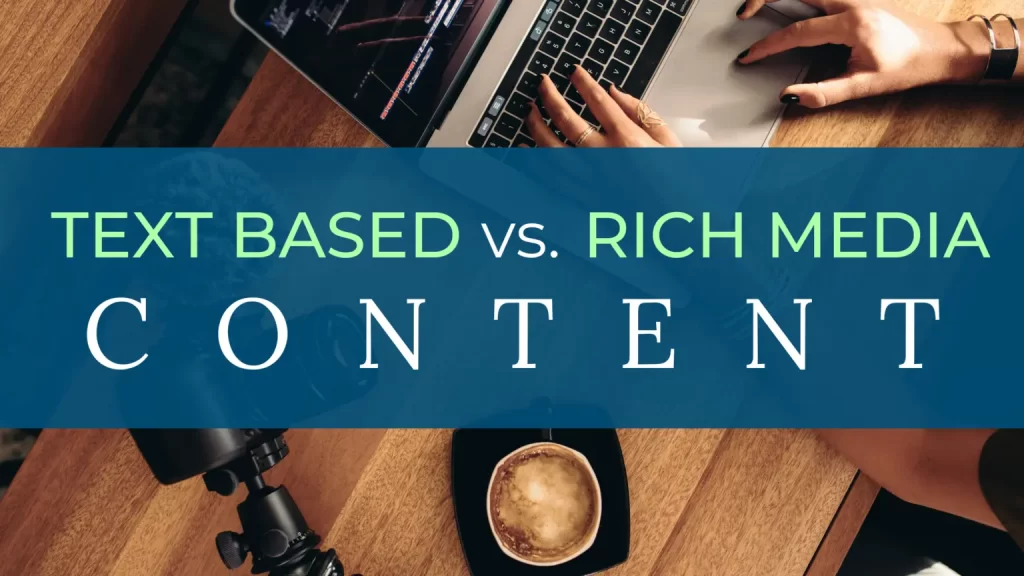
Text-Based Content vs. Rich Media Content
Are you stressed because your blogs are not turning out to be much interesting?
Even after all these efforts of writing and editing your blogs, are people still not interested in reading them?
Do you know where your content went wrong?
Now that I have your attention let me explain the real meaning of CONTENT and what kind of content can help you improve your blog.
Content is the art of explaining thoughts, feelings, emotions, or conveying a message, idea, information, or opinion. Explanation and justification of an idea with a few examples through reliable sources can be considered as CONTENT.
In this era of technology and social media, content plays a vital role in conveying messages. We all are looking for content everywhere. We always want some sort of entertaining content, let it be something to read, listen or watch. All pieces of information are a kind of content.
Content can be delivered via texts only like blogs, books, e-books, or via various media like cinema, radio, television, smartphones, audio CDs, live events, magazines, and live events, such as Social media LIVE, conferences, speeches, and stage performances.
So let’s understand these two broad types – Text-based Content and Rich Media Content.
Text-Based Content
As the name speaks for itself, Text-Based Content refers to information that has been conveyed through texts. Text-based content is a form of content that includes using words with correct articles, punctuation, and grammar in meaningful sentences.
And some creativity, of course!
Any written form of content that clearly shows the texts is Text-Based Content. This article that you are reading is an example of Text-Based Content. This is more useful as it is easier to convey the message, and it also helps in clearing unnecessary misunderstandings.
Why is Text-Based Content helpful?
- The text-based content feature is the most used feature in mobile phones and computers.
- The open rate of Text-based content is higher compared to others.
- Text-based content is completely interactive.
Tips for making Text-based content:
- Get creative while choosing the content and their topics.
- Use simple language for better understandings.
- Write short simpler sentences.
- Make text scannable
- Nix the jargon
- Create urgency for a better and quick response.
- Try to put personal messages to interact better with the consumers.
Now you understand that everything that you have been reading above is text-based content.
Now we will let irony join us.
These tips can be made into an infographic as well as shown below:
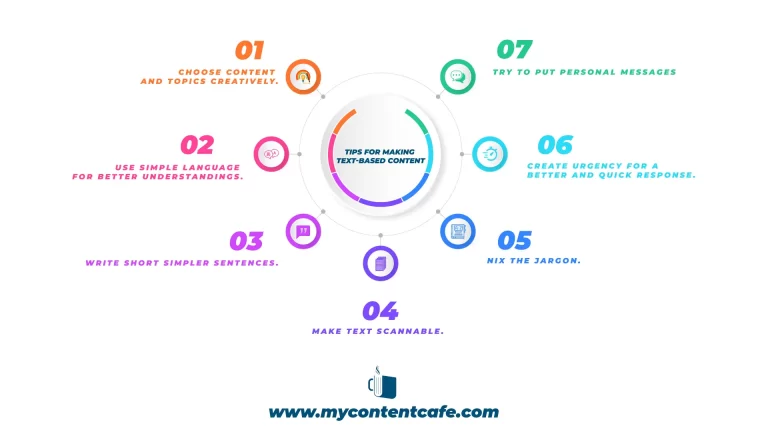
This is how we convert text into infographics or media; hence shifting a simple text-based content into media content.
Want to know more? Read below –
Rich Media Content
Rich Media Content usually refers to text content mixed with colossal use of media. It includes videos, still images, podcasts, gifs, etc. In today’s era of social media, we have observed a dynamic control of social media over human lifestyle.
Taking advantage of this habit, social media marketing has been rapidly surfacing the internet. The rich media content plays a huge role in marketing as it grabs customers’ attention through visuals.
Top Benefits of Rich Media Content
- Increased Website Traffic
- Accelerate the Customer Journey
- Mobile Compatibility
- High Interaction Rate
- Opportunity for Creativity
- Trackability
- Video Integration
Let’s take a simple example:
If a person is scrolling on Instagram feeds and comes across an advertisement, the first thing he will notice in the post is the visuals and how captivating it is.
How is Rich Media Content effective?
- Around 90% of information transferred to the brain is Visual.
- Over 40% of people respond better to images than to written content alone.
- People remember 80% of what they see or do.
- Visual content is 30% more likely to be read than a text-only article.
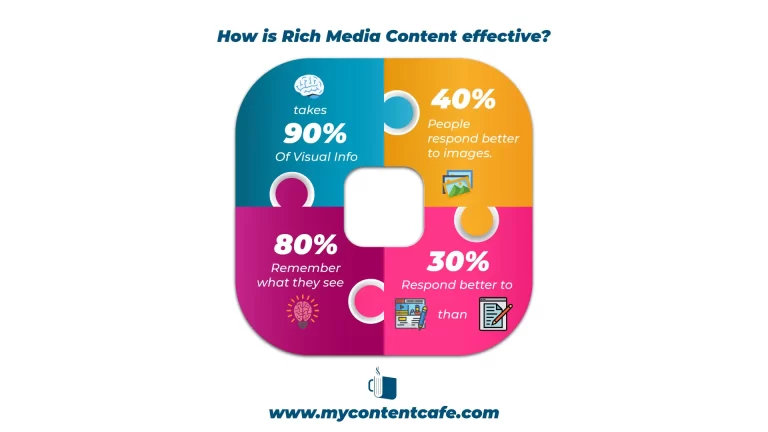
Text-Based Content VS Rich Media Content
- Text-Based Content helps draw prospects in, while Rich Media Content, like images and videos, provides deeper engagements with those prospects.
- Text-Based Content usually tracks a single click-through link, while Rich Media Content tracks multiple click-through links.
- Text-Based Content is static with less or no interactivity, while Rich Media Content is dynamic with high interactivity.
- In Text-based content, the headline makes a lot of impact, while in Rich Media content, the headline is not important as the image or video makes the impact.
Types of Content that consumers want to engage with: 2021
- Around 68% of content consumers want to engage with images. They believe that images help better to get a clear message.
- Around 50% of the consumers believe that videos help them understand the message better.
- 30% of the consumers are interested in Text-based posts.
- 26% of consumers wish to be engaged with stories, 26% with polls, and 22% with live video.
- Around 15% of consumers prefer GIFs, URLs, links to brand content, and others.
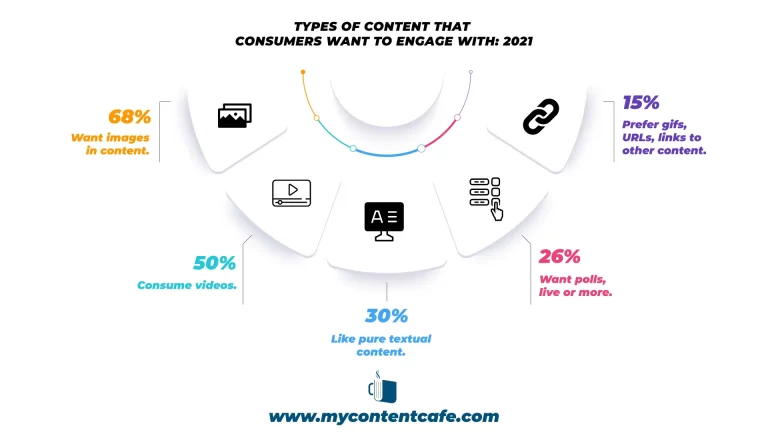
In this pandemic era, content consumption habits have changed drastically over the past year. It becomes harder to understand the type of content you need to make.
Does it confuse you too while choosing among one of these? Let us help you with that.
The data shown below will help you understand the new habits, and thus you can know for yourself the right content for your business.
- According to the survey, over 78% of content consumers emphasize strongly on the information source.
- As influencers have an upgrade during these times, around 65% of consumers prefer credible content from industry influencers.
- Around 51% of the consumers read the content after scanning the length of the content.
- Over 50% of the consumers wish to have optimized content that is accessible on mobile phones and tablets.
- And 42% of consumers prefer shorter formats.
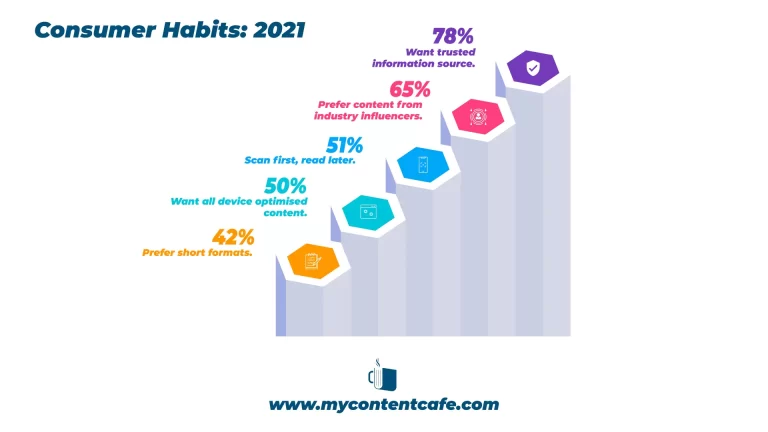
Conclusion
Rich Media Content usually complements the Text-Based Content and might add up to it. Even though Text-Based Content is easier to prepare, Rich Media Content is considered to be more effective.
It also helps people with low literacy to perceive and understand the information they find challenging to read.
Rich Media Content helps stimulate one’s imagination and helps understand the content in a better, clearer, and faster way.
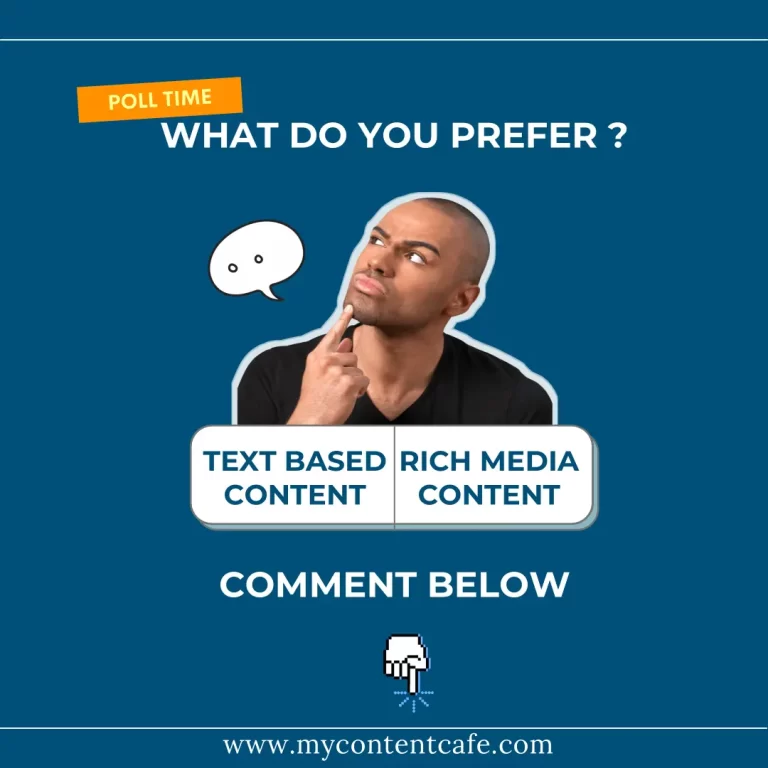
Tell us what you prefer in the comments below –
Did you know?
The blog you read just now is an example of Hybrid content, where text-based content meets rich media content.
